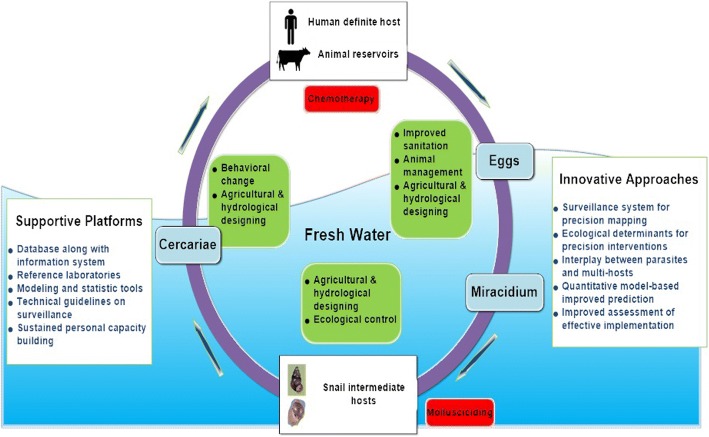Fig. 1.
Integrated interventions in the ecological framework. Integrated interventions, targeting various aspects of parasite transmission, primarily consist of infectious source control (e.g. chemotherapy on infected humans and/or animals, animal and waste management through improved sanitation), control of snail intermediate host (e.g. mollusciciding using niclosamide, agricultural and hydrological management, and afforestation), and exposure control (e.g. behavioral change through hygiene improvement, and agricultural and hydrological management). However, the relative contribution of integrated intervention framework to the suppression of schistosomiasis remain largely uncharacterized both mechanistically and quantitatively. This limits the generalizability of these intervention approaches to endemic areas elsewhere. The ecological framework emphasizes dynamic interactions among different system components as illustrated in the figure. Such framework can allow the potential usage of different tools to quantify these interventions and associated impacts. The commonly used approach is dynamic modeling, in which these interventions can be specifically factored. The widely used metric for transmission of infectious diseases, Re, effective reproductive number (or transmission potential) may be used to assess the impacts of the integrated interventions on disease transmission and efforts needed to eliminate the transmission. While ecology-based intervention including environmental modification through water resources projects or agricultural projects will be the major components to provide long-term effectiveness and precision intervention towards schistosomiasis transmission interruption. Biological and mechanical control methods such as application of extracted plant molluscicides and introduction of natural predators (e.g. snail eating fishes or prawns) of intermediate hosts can be harnessed to effectively control snails

